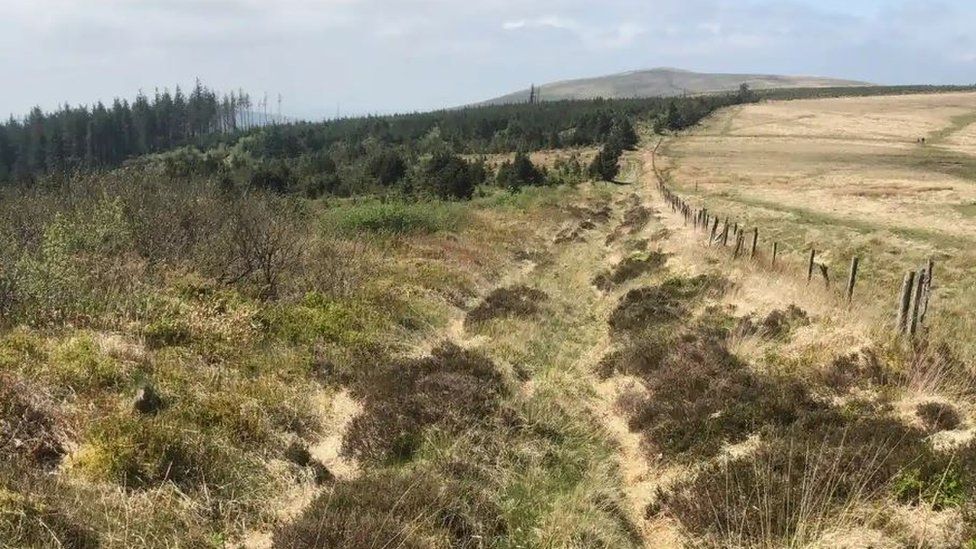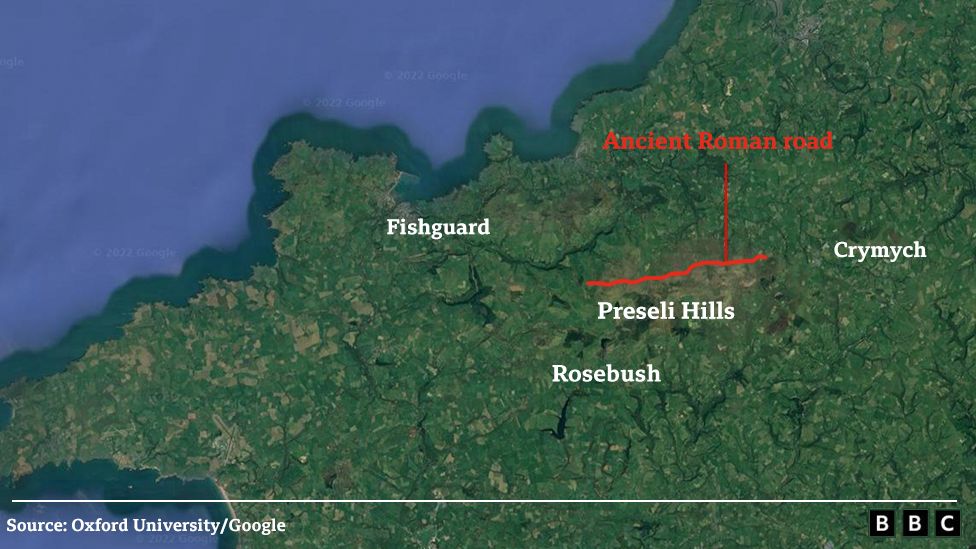Pembrokeshire: Was unearthed Roman road used to trade Irish gold?
By James McCarthy & Tomos MorganBBC News
7th June 2022

Dr Mark Merrony found the route after following up the work of Edward Lhwyd
An ancient Roman route found in Pembrokeshire could be the real "golden road" of the Preseli Hills.
There is currently a path stretching over the slopes with that name.
Roman expert and Oxford University tutor Dr Mark Merrony said the newly discovered route could have been used to import gold from Ireland.
Dr Merrony, from St Florence, Pembrokeshire, believes the 40-50km (25-32 mile) highway stretches from just north of Carmarthen to St Davids.
"This route I have found is what people call the golden road," Dr Merrony said. "I think people were trading gold from Ireland."
'Great port'
The road was going west then turning and heading down to St Davids, he said.
"It is going there because St Davids is on the coast."
Near St Davids is Whitesands Bay, and the Welsh name for that is Porth Mawr, or "great port." He said the highway underscored St Davids' use as a port.
"It's the closest crossing to Ireland south of Anglesey," he said. "So it's linking St Davids as a port and a point of crossing to the rest of Britain.
"If this road does go from St Davids, as I believe, it opens up the possibility that there was trade conducted from Ireland via this road in the Preselis to the east."
The route could also have been used to move Pembrokeshire's bluestones to Stonehenge.

Rocks from the area were used in the construction of the site on Salisbury Plain, in Wiltshire.
"It's a real tantalising possibility, but it's conjecture, there's no way of proving it," Dr Merrony said.
He said the idea the Romans did not get far into Wales was wrong and that in fact they ventured all over.
"There are some extraordinary Roman sites in Wales such as Caerleon; people commonly say to me 'Did the Romans go far into Wales?' he said.
'Fully integrated'
"This puts them right across the map. This actually pushes the Romans right across Pembrokeshire."
He said it suggested Ceredigion and Carmarthenshire were also "fully integrated" into Roman Britain.
Such a route could only have been constructed by an army, he said.
"Who else could have put such a major route across the Preselis?" he said. "It's not the Normans, they did not get there.
"The Welsh princes, I doubt they would have got an army together of hundreds to build a dyke across the Preselis."
Dr Merrony began researching the route after following up the work of Edward Lhwyd, a keeper at Oxford's Ashmolean Museum in the 1690s who visited Wales in 1698.
He observed that "along this mountain is to be seen an old dyke, or as it is conjectured, a Roman way, Roman coins being frequently found near."
He said antiquarians of the 17th and 19th centuries had embraced the existence of a Roman road. It was marked on 19th century Ordnance Survey maps, but was then rejected.
"I started my field work in April properly in the Preselis following a parish boundary, which often demarcates a Roman road, and I didn't find anything," Dr Merrony said.
After walking about two miles he was about to give up for the day when he saw "what looked like a canal with undergrowth".
"I then traced it for a few hundred metres east and west, then went back, and found all of it," he said.
Pembrokeshire: Was unearthed Roman road used to trade Irish gold? - BBC News